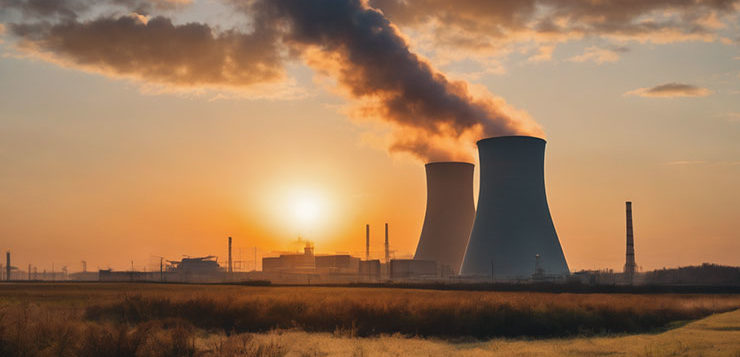Decades of misinformation about everything from its safety to its waste had nuclear power all but written off in Australia. But as Geoff Russell notes, the fortunes of one of the world’s cleanest forms of energy production is on the up.
A new multi-country opinion poll shows strong support for nuclear power. The poll was conducted by Savanta for Radiant Energy. They used a sample of 1,000 in each of 20 countries, enough for reasonable accuracy in each.
That’s something that surprises people in Statistics 101, namely that the number you need in a poll for a given level of accuracy has nothing to do with the size of the population you are polling, assuming a reasonable sampling methodology. You need about 1,000 people whether you are looking at a country of 330 million, like the US, or the Australian state of Tasmania, with just 541,000 people.
You can look up the proof in any Statistics text book, I won’t bother repeating or explaining it. It’s just a fact.
In 17 of 20 countries, including Australia, more people support nuclear power than oppose it. Support starts at 4 to 1 in China, then slides down to Germany at position 13, but where the ratio of support to opposition is 42 to 29. Australia is 16th on the list of 20, but even in Australia, there is a slim net level of support at 40 to 36.
But the more interesting issue isn’t what people think but why they think it!
Why would anybody oppose nuclear power? It has a far smaller environmental impact than any battery-supported renewable technology, not to mention the other renewables, like burning forests and flooding valleys, aka known as biomass and hydroelectricity. Objectively, it’s a slam dunk, which is why a veritable who’s who of environmental scientists working in Australia signed an open letter back in 2014.
So what kinds of misinformation lead to opposition?
The poll provides one critical clue in its question about greenhouse gas emissions.
Q5: To what extent, if at all, do you think [nuclear energy]creates greenhouse gases that impact climate change?
Select one response Not at all, Not very much, A fair amount, A great deal, Don’t know
Net perception = Not at all + Not very much – A fair amount – A great deal.
Globally, 25 percent of people thought that nuclear power created a “great deal” of greenhouse gases, with another 27 percent thinking nuclear created a “fair amount” of emissions. In Australia the corresponding numbers were 21 percent and 24 percent respectively. This 45 percent is more than the total of 36 percent who oppose nuclear power!
Dismal failure of public and private news media
Given the column inches and hours of TV devoted to climate change, how could anybody not understand the relative carbon ranking of electricity sources? How can our news media be so singularly and spectacularly incompetent?
As misinformation goes, this is a whopper. There is no grey area, no subtle disagreements among experts. It’s in every Intergovernmental Panel on Climate Change (IPCC) report – nuclear is low carbon, down there with solar and wind.
Having grown up anti-nuclear, I do have some understanding of where the misinformation came from. Anti-nuclear people are mostly innumerate, frequently anti-science and have really only joined the climate debate on the side of the science because they see it as a chance to kick capitalism and economic growth. It isn’t that they understand the science; they don’t. Almost nobody does.
For many decades the persistent lie from the anti-nuclear movement was what I call the “tail pipe lie”. Most people have worked out that electric vehicles might have no CO2 emissions from their tail pipes, but that there is a carbon cost incurred at the coal plants which generate the electricity which powers them. Many in the antinuclear movement analogously believe that uranium mining is an emitter of vast plumes of CO2; so much so that nuclear power is actually f*cking filthy.
The analogy with EVs is obvious, it just happens to be wrong. I’ll explain this in some detail but first let’s take a global look at the level of misinformation on the issue. Japan is the best informed, but still dismal.
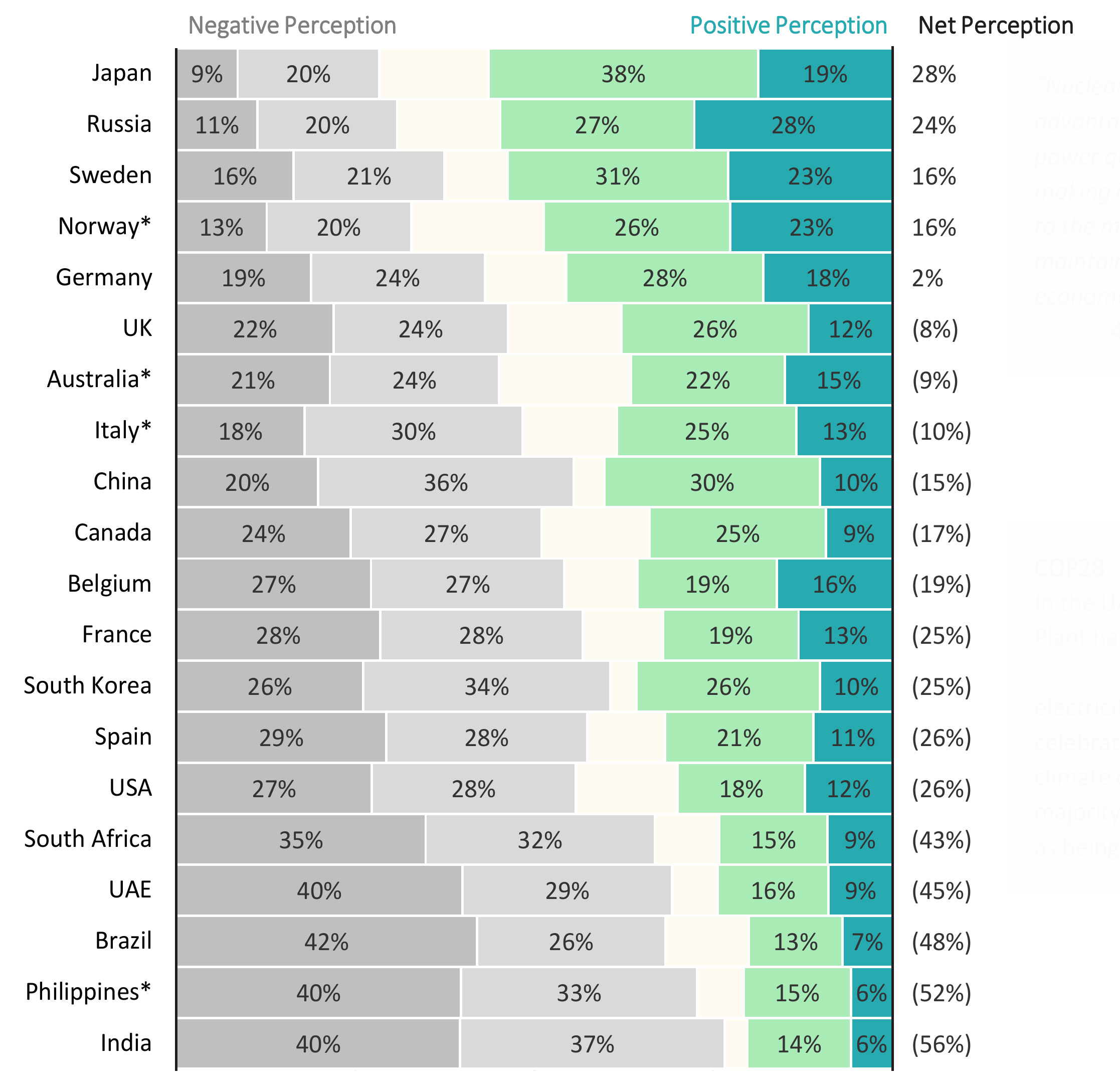
Now let’s look at an incredibly careful and authoritative study on the amount of CO2 per kilowatt-hour of various technologies. It’s from the EU’s technical experts, and it’s a whole of lifecycle analysis of electricity generation technologies in 2021. And before anybody asks, this includes all emissions, including mining, fuel enrichment, decommissioning and waste disposal.
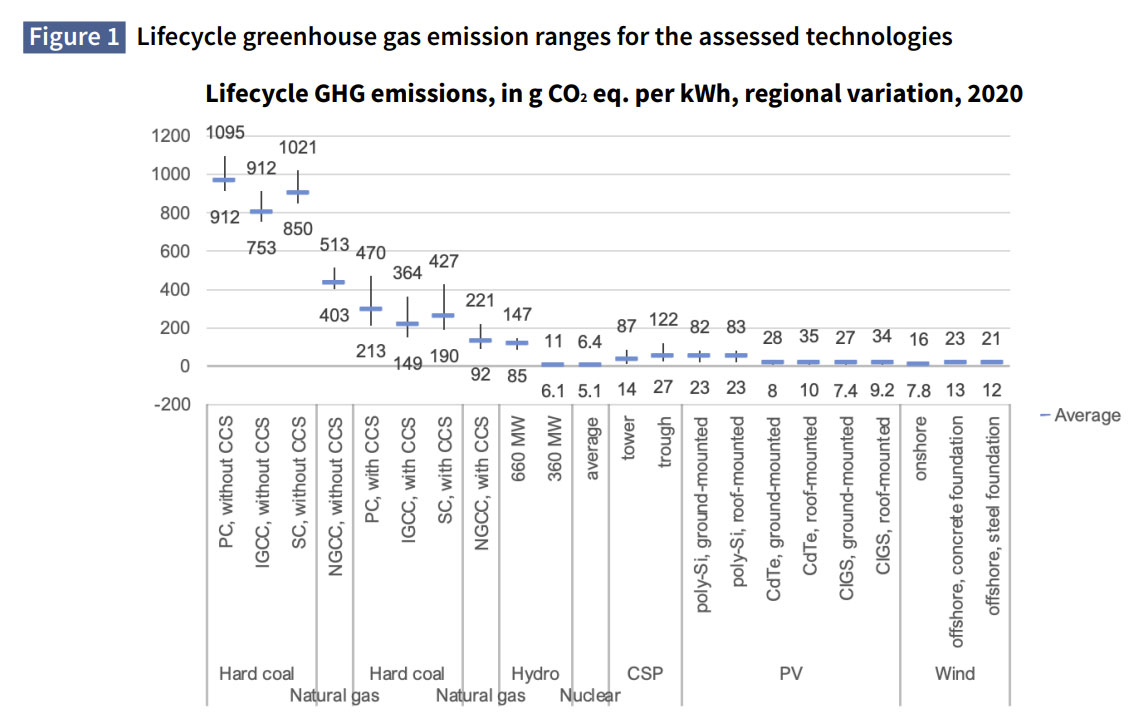
As you can see, the EU Commission technical experts found that emissions from nuclear power are the lowest of any technology.
And this study has one massive pro-renewable bias; it excludes any of the emissions associated with storage (eg. batteries) and grid expansion required for wind and solar but not for nuclear.
In short, nuclear wins despite wind and solar being given a flurry of free kicks from directly in front of goal. But do you just have to trust the experts? Not really.
You only need a few facts and a little high school arithmetic to prove that nuclear’s greenhouse gas emissions are tiny, even if you don’t have all the information and skill needed to calculate an exact number, like those EU experts.
Understanding beats working out who to trust
Understanding why emissions from mining, fuel enrichment and the like are so small for nuclear is much better than simply believing an expert study; but you really should do that also.
All you really have to know is the price of uranium and the amount used by a reactor in a year. The rest is just basic arithmetic. Once you get the reasoning, you don’t need experts and you can use your new skill in all kinds of ways!
Think about it. Look up the price of uranium, it’s on the up, but $100 per kilo is a good estimate. That price has to cover all the fossil fuels needed to mine that kilogram. If it didn’t then uranium miners would lose money; which they don’t. Subsidies aren’t an issue because the reactor fuel (uranium) costs are a small part of the cost of running a reactor.
And if you think uranium mining is getting a massive subsidy, then go on, double the price, pretend the real price is $200 per kilo. It won’t matter to the outcome.
The cost of the uranium used during a year tells you the maximum possible CO2 emissions attributable to the reactor in a year.
Why? If uranium is $100 per kilo then just pretend you burned $100 of petrol to mine each kilo. You can’t have burned more, and you probably burned less. But this assumption will over-estimate the emissions associated with mining, so if the number is small you know that the accurate number will be even smaller. Mathematicians call it a bound. You are calculating a number which you know is an over-estimate so you know where the real number is… below it somewhere.
Let’s work through an example.
A Canadian CANDU 6 reactor runs on natural uranium. The cost of uranium, about $100 per kilogram, has to cover all the fossil fuels used to produce it (and everything else).

Running the mining equipment, driving delivery vans, building delivery vans, everything. That’s how costs work, they cover the inputs! Let’s pretend that there are no inputs but diesel. For $100 you can buy about 50 litres of diesel. Burning it will produce about 50 x 2,700 grams of CO2. These factors are well understood.
Now how much electricity can you get from the uranium? Again, in a nice simple CANDU 6, you can get about 180 MWh per kilogram of uranium.
Now just divide 50 x 2,700 grams by 180,000 kwh. Which is about 0.75 grams of CO2 per kilowatt-hour.
The real figure of course will be much less than that; but it certainly can’t be more.
Most reactors use enriched uranium, this gives seven to 10 times more energy per kilogram and complicates the calculations… but the end result won’t be much different.
If enriched uranium was too expensive, nobody would use it. So uranium mining emissions are clearly trivial and are only claimed to be non-trivial by people who’ve never bothered to check the numbers.
We don’t need to know exactly the number, all we need to know is that it’s a very small number. But what about enriched uranium? And other kinds of reactors?
People use this enriched uranium to save on uranium and refuelling costs, which means they have to be more rather than less efficient, even if the CANDU trick is simpler.
See how obvious the truth looks when you think quantitatively about the problem? You don’t have to work out who to trust, the answer is clear and not really very complicated. So now you can understand that when people say, “But what about the mining emissions for producing uranium!”, you can say, “What about them?”.
It’s not about waste management, stupid
Lies about waste management come a close second to lies about the greenhouse gases associated with nuclear power.
A mate of mine illustrated these brilliantly in a recent discussion. I call him a “mate” because we agree on many really important issues; like both being vegan. He told me he’d followed the Victorian inquiry into nuclear power very carefully and that none of the people presenting to the inquiry had any idea of how to handle nuclear waste.
The basic rule of thumb for misinformers (aka liars) is to tell the same falsehood often and confidently. For every person, like me, who will go to the effort of fact-checking your lie, there will be dozens more who won’t bother.
In this case, checking is easy. The Victorian inquiry has published transcripts on what everybody said to the inquiry. So it’s easy to confirm. I’ll post a few details below, but the bottom line is that many witnesses to the inquiry knew exactly how to handle nuclear waste, and were quite happy to give the Inquiry details.
This isn’t surprising because of all the technical challenges in the nuclear industry, handling waste is among the most trivial. There is a waste repository in the Netherlands that has been made into a museum; you can walk above the casks holding the high-level waste. Every few years they repaint the building to illustrate that the radiation levels have dropped.
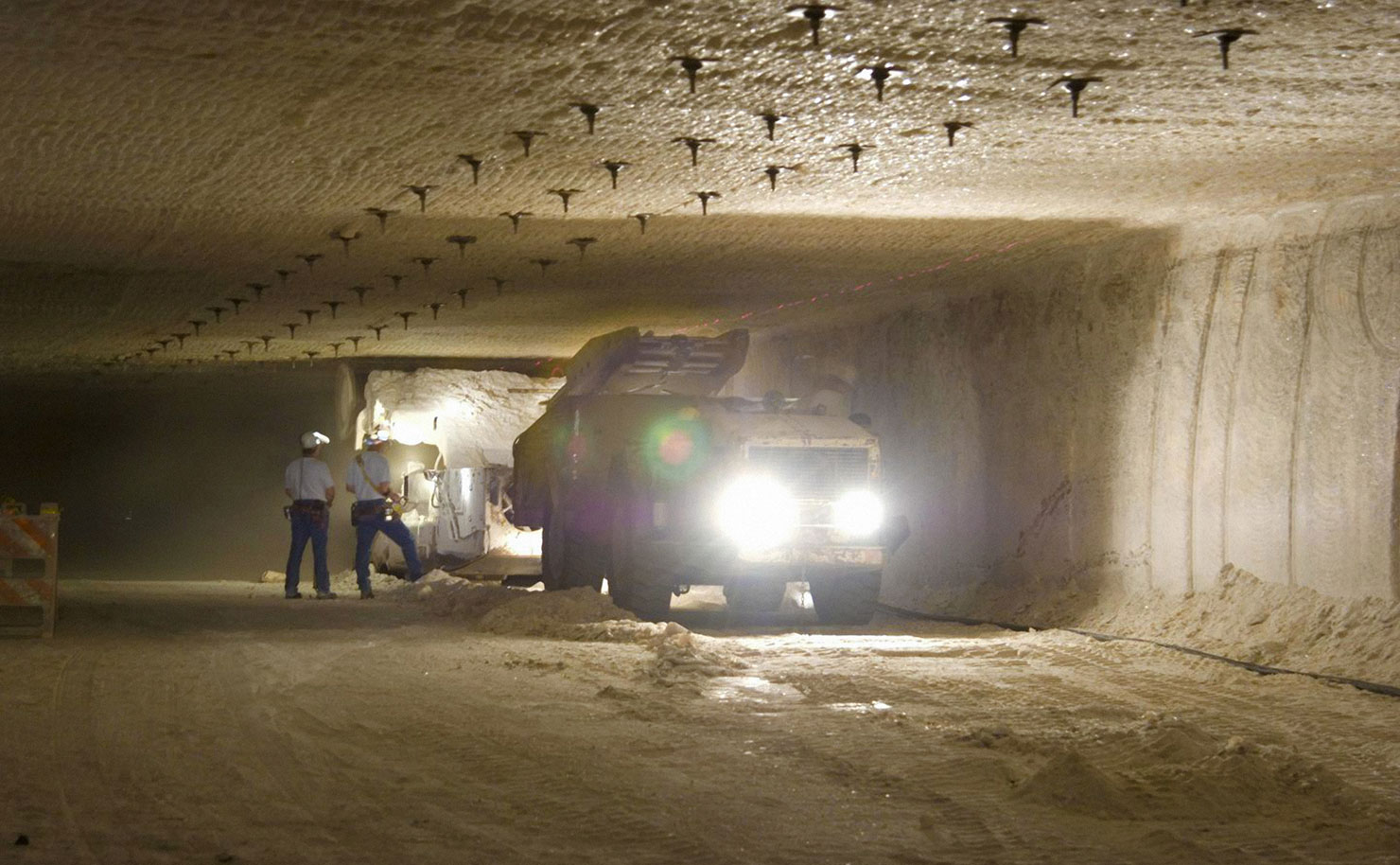
But back to that inquiry. On 28th August 2020, a team from Australian Nuclear Science and Technology Organisation (ANSTO), Australia’s nuclear science and technology expert organisation gave all manner of details about how waste is managed, starting with vitrification and then deep geological burial. On the 12th of March a representative from ARPANSA, Australia’s radiation protection expert body, also presented a substantial amount of details. So my mate was wrong; not just a little bit but jaw-droppingly wrong.
I recently gave evidence on duck shooting to a South Australian Parliamentary Committee and was astonished some months later when a member of that Committee made statements totally inconsistent with the facts I (and others) had presented to the Committee.
When people have fixed ideas, like my mate, and like that MP on the duck inquiry, it doesn’t matter how much evidence is presented, or how expert it is, or how detailed, they will conveniently either forget or invent a narrative which didn’t occur.
Other people presenting to the Victorian nuclear Inquiry gave less detail, but were pretty clear. Professor Stephen Wilson, for example, described waste handling as a “very manageable problem”.
I spent a couple of hours looking at the transcripts and couldn’t find any experts who didn’t know how waste could or should be handled. They were, in fact, at pains to point out that Australia was blessed with plenty of reasonable choices for burying waste.
But isn’t it too slow?
Okay, so nuclear might be much better for the planet than wind+solar+batteries, but isn’t it too slow?
The International Energy Agency (IEA) has a Net Zero by 2050 (NZ2050) plan calling for about 20,000 gigawatts of solar power globally by 2050. They specify the compound annual growth rates required, so it’s not hard to work out what that looks like. Here it is.
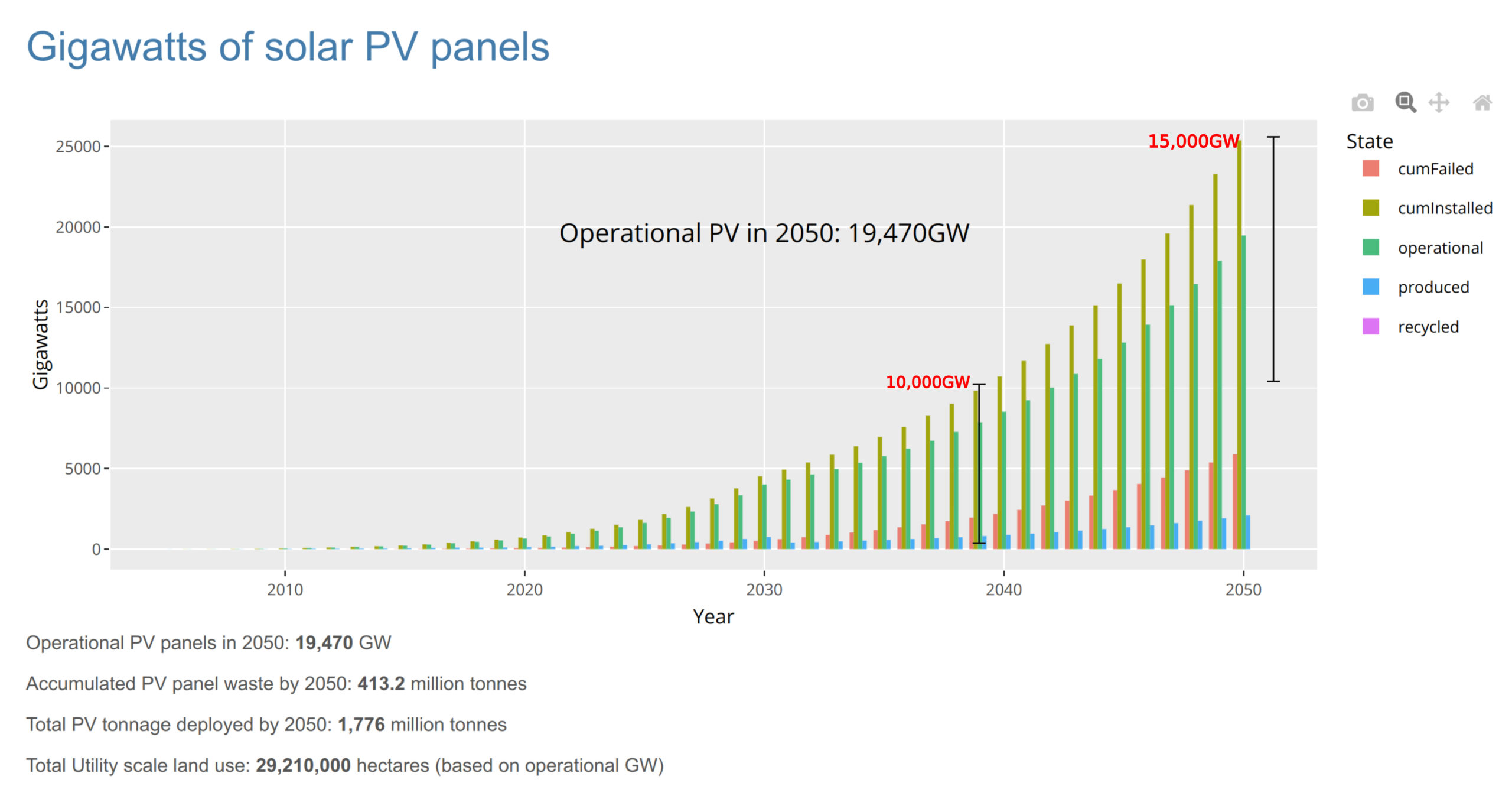
As you can see, build rates keep accelerating. It’s an incredibly ambitious plan. Could we go even faster and get it all done by 2040? That would require opening more mines for materials and more factories to make them. Each gigawatt of solar power requires 70,000-100,000 tonnes of mined materials. And that doesn’t include the mounting materials; typically steel, aluminium and copper.
All up, the solar photovoltaic (PV) part of the IEA plan calls for the deployment of about 1.7 billion tonnes of stuff (plus mountings).
The graph shows not just the amount deployed, but the amount that fails; using a fairly standard failure model. If you put more productive capacity into recycling, then you can recycle the failed panels, and reduce the total mining requirement, but you’ll still be over 1.4 billion tonnes.
Over half the global PV required by 2050 will be built after 2040
The big thing to notice about the graph is that over half of the PV deployed by 2050 is deployed in the last 10 years; meaning on or after 2040. The precise fraction will depend on the failure rates. By 2040, we are starting to notice the rising wave of failing panels.
For every 1 gigawatt of nuclear we can deliver before 2040, that’s about 4 gigawatts of PV we don’t have to deploy to hit that 2050 target. For every gigawatt of nuclear we can also save many gigawatt-hours of battery storage needed by all those solar panels; otherwise they are totally useless after sundown.
With rooftop solar, the failure problems are considerable. The company which installed your panels may not exist. Your panels may be fine, but your inverter is busted and your installers are muttering about the problems of new inverters on old panels; advising you to “upgrade”.
Conclusion
Why anybody is interested in solving the technical problems associated with wind and solar is a mystery. Because, as plenty of recent high-quality studies have shown, nuclear is simply better. If you want to ‘tread lightly’ on the planet, then you don’t cover millions of hectares with solar panels and batteries.
The challenge for the nuclear industry is to fix its regulatory mess, which has grown out of the reality that historically, ionizing radiation was one of the first causes of cancer to be discovered. And nobody at the time had any idea how pathetically weak it was as a carcinogen compared with lifestyle choices: red and processed meat, alcohol, tobacco, obesity and inactivity.
If we had a nuclear regulatory system appropriate for the risks involved, it would be quite different. It would look a little more like an aircraft regulatory system. That would mean no restrictions on designing and building any kind of reactor; exactly as with aircraft.
An airline builds a plane and then proves it is safe. This is real proof, not just people looking at design drawings, but actual tests. Nuclear plants have never been as dangerous as aircraft, or dams or gas plants. So why the excessive regulation?
It’s a scam. It started out as well meaning, but then took on a life of its own and will be really hard to shift. You’d still need weapons grade material to be strictly regulated, but that’s not an issue for power reactors – using a power reactor to make bomb material is like using a cruise liner to pick up your pizza. And even if you were dumb enough to do it, you can’t hide that you are doing it from modern satellites.
Fixing the nuclear industry will start by pushing back against lies. Lies about risks, lies about greenhouse emissions, lies about waste, and lies about there “not being enough” time to build nuclear plants. There is no doubt that building nuclear power rapidly and cheaply won’t be easy, involving both technical and regulatory problems. But honesty about facts is a great place to start.
Appendix: Chernobyl mythology
Here’s an interesting article from The Age on May 1, 1986; 5 days after the Chernobyl accident. The headlines on that day, around the world were “2,000 dead”; not bad considering there were less than 200 people on site.
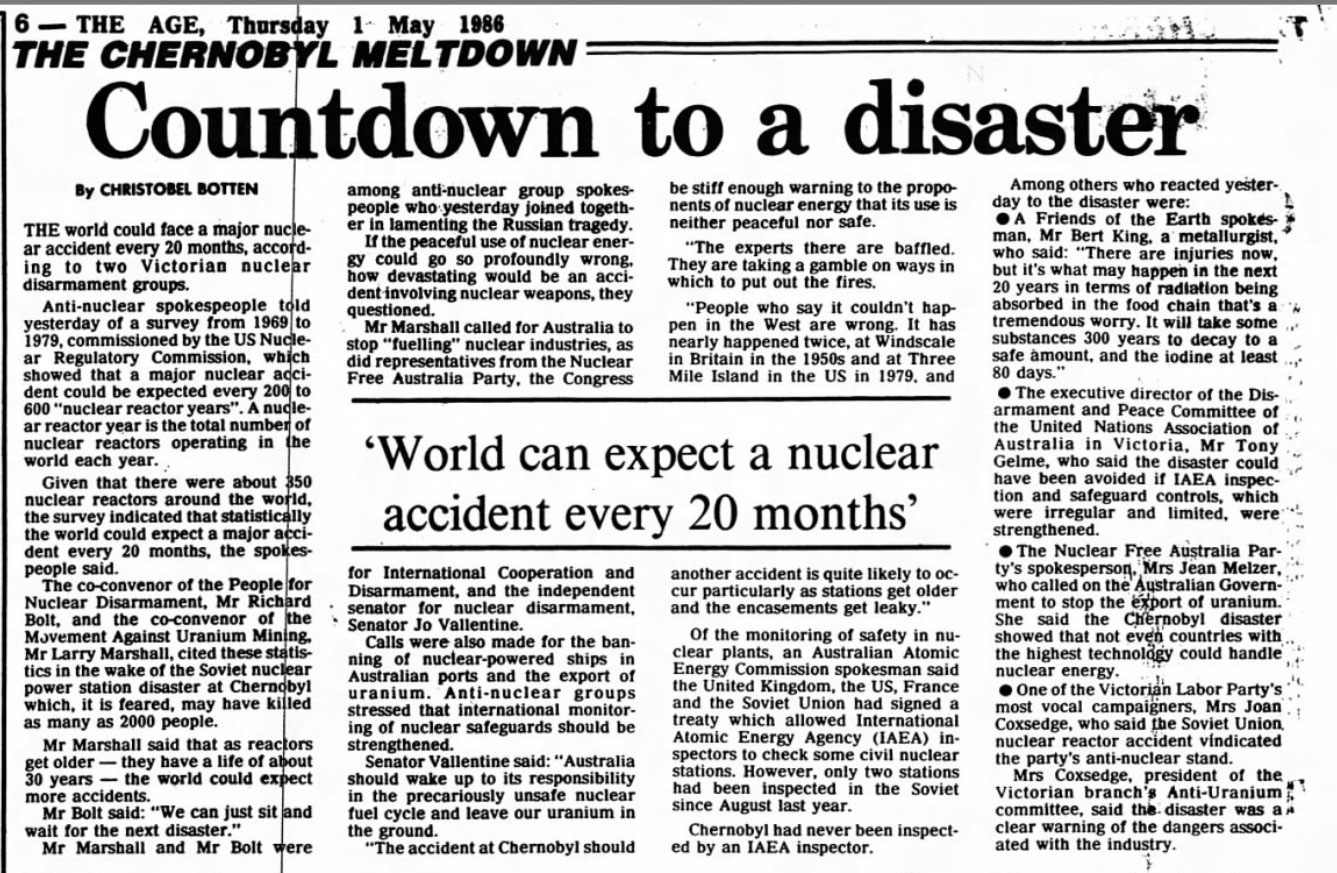
Note the bold prediction of a serious accident every 20 months and the 30-year lifespan of reactors. The anti-nuclear movement, then as now, just makes stuff up.
Many reactors have 40 or more years of successful operation behind them and there has never been any major accident following Chernobyl. But what about Fukushima? All the loss of life from that very expensive accident, was as a result of the evacuation, in defiance of International Atomic Energy Agency (IAEA) guidelines. All that suffering is down to Japan’s former prime minister, Naoto Kan and the fear mongering of the anti-nuclear movement.
Fukushima was expensive, not dangerous.
During the Victorian inquiry about nuclear power, Helen Caldicott was still hard at work making stuff up. She was taken to task by other witnesses for promoting fears of contaminated Japanese seafood.
Personally, I reckon the brief cessation of fishing around Fukushima in Japan was wonderful for marine life. Does anybody think fish enjoy being suffocated and crushed in a net? But what about the human impacts of eating contaminated fish?
We don’t have to guess: the people of Kerala in Southern India live in a very radioactive region; and have done forever. They have been studied in great detail and have far lower cancer rates that in Australia (the age-standardised rate of cancers in Australia is about triple that of India).
Fish in Kerala emit about 10 times the level of alpha radiation as fish elsewhere. But still there is no impact. In contrast, Australia has a very carcinogenic diet and lifestyle; you can’t do worse than beef and bacon; except perhaps by adding a little kangaroo and washing it down with alcohol, while snorting smoke from a BBQ.
Donate To New Matilda
New Matilda is a small, independent media outlet. We survive through reader contributions, and never losing a lawsuit. If you got something from this article, giving something back helps us to continue speaking truth to power. Every little bit counts.

